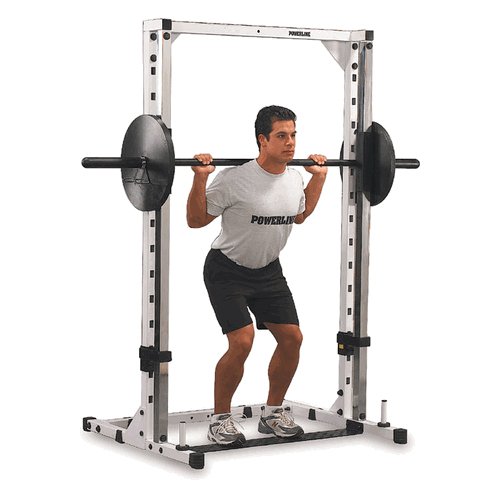<p style="text-align: justify;">Most people who lift weights in the gym or at home understand that you need to have proper form, and they wouldn’t consider themselves ignorant when it comes to their weightlifting posture. The problem is that good form involves more than just the right posture and positioning.</p>
<p style="text-align: justify;">Even if injury isn’t a concern, it’s often the case that people aren’t getting the most out of their lifting session, and that those sessions are highly inefficient in terms of building muscle and burning fat.</p>
<p style="text-align: justify;">What I want to do here, is lay down some principles for proper form that cover every area of resistance training. That way you can apply them to your workout whether you train with bands, weights, kettle bells or even your own body weight.</p>
<p style="text-align: justify;"><img class="aligncenter size-full wp-image-7192" alt="Weightlifting: A Few Principles Of Proper Form" src="https://medusamagazine.com/wp-content/uploads/2013/09/Weightlifting-A-Few-Principles-Of-Proper-Form.jpg" width="500" height="500" /></p>
<p style="text-align: justify;">Let’s start with some of the goals of resistance training:</p>
<ul style="text-align: justify;">
<li><strong>Muscular Tension and Stress</strong></li>
<li><strong>Increased Heart Rate</strong></li>
<li><strong>Sustained Work for your Muscle</strong></li>
</ul>
<p style="text-align: justify;">Proper form should accomplish these things, and most of the time you lift weights, all these events take place in one form or another. Our goal is to make sure that these things occur as much as possible when you lift, by making sure you get the most out of every rep and that your form is exactly the way it should be.</p>
<p style="text-align: justify;">Here are a few principles to stick by, regardless of your workout routine.</p>
<h4 style="text-align: justify;"><strong>Reps should be a Smooth, Controlled and Fluid Movement</strong></h4>
<p style="text-align: justify;">If your form is getting shot to bits by too much weight, you’re not doing your body any favors. Use a small enough amount of weight so that your movement is completely under your control and focused on the muscle group you’re working. This is one of the basics of resistance training, though it often gets overlooked.</p>
<h4 style="text-align: justify;"><strong>Fast on the Way up, Slow on the Way Down</strong></h4>
<p style="text-align: justify;">When you lift weights you’re usually dealing with two different types of tension. The first is when you’re lifting the weight up, where your body is fighting gravity, the second is when you’re dropping it back down and gravity is on your side. Proper form would mean that you utilize both movements by pushing the upward movement a little quicker, and then by dropping back to the original position slowly so that you’re also fighting gravity on the way down.</p>
<p style="text-align: justify;">For example, if you’re doing a bicep curl, bring the weights up quickly while still maintaining control, then drop them back down slowly so that your muscles are still working against gravity on the downswing of the rep.</p>
<h4 style="text-align: justify;"><strong>Your form Dictates your Reps</strong></h4>
<p style="text-align: justify;">Some people don’t even count reps, and instead just wait for their form to fail before they stop. That’s really not a bad idea, but if you want to stay around 10-12 reps, make sure that the weight you choose allows you to maintain proper form until you’ve completed each rep.</p>
<p style="text-align: justify;">Ideally, the last two or three reps should be tough enough to put some significant stress on your muscles, yet while still maintaining good form.</p>
<h4 style="text-align: justify;"><strong>Avoid grunting and Drastic Facial Expressions</strong></h4>
<p style="text-align: justify;">If you’re making a lot of noise and disfiguring your face the whole time you’re lifting, you’re taking away energy that could be used in the muscles that are actually doing the work.</p>
<p style="text-align: justify;">Try and keep a straight face while you’re doing your lifts. If you can’t help but grunt and make noise, you’re probably lifting too much weight.</p>
<h4 style="text-align: justify;"><strong>Conclusion and Knowing your Limitations</strong></h4>
<p style="text-align: justify;">One of the best things you can do for your form is to make sure that you’re well acquainted and respectful of your limitations, and overall physical abilities. While it’s important to challenge yourself, you need to do so in slow patient increments, and avoid getting sidetracked by movements you aren’t physically ready for, or too much weight.</p>
<p style="text-align: justify;">Keep your form as consistent and controlled as possible regardless of what kind of weightlifting exercise you’re engaged in and you’ll make far more progress than you would have thought possible.</p>
<p style="text-align: justify;">Jared Coleman is a professional blogger that shares tips and advice on health, training and nutrition. He writes for Fitness 19, a leading fitness facility with affordable month to month memberships.</p>

Weightlifting: A Few Principles Of Proper Form
